#and this is why video games are my favorite storytelling medium
Text
my favorite thing about this new spider-man game is that everyone who wears it in the game is like 'Wow I feel so energized now! So powerful!" and they really make a point to emphasize that.
And then when the player finally gets to control Venom, they made him control in a way that is so satisfying and ridiculously OP that every streamer is like "BITING RIPPING TEARING KILLING NONE OF THESE EVEN PHASE ME AHAHAHA WHO CARES ABOUT PETE AND MILES THIS IS SO SICK!!!!!!!!"
Thus mimicking the characters that wear the suit
#real life with risa#and this is why video games are my favorite storytelling medium#literally I'm watching jack play and he was like 'aw man I'm sure they won't let me but it'd be so cool to go around the city like this!!!'#like BRO it took you 2 seconds in the venom suit for it to convince you killing is good actually LMAO#spider-man 2 spoilers
6 notes
·
View notes
Text
Every time my old post expressing bafflement at 'anti player theory' undertale and deltarune fans gets a note, I go through the war again. Maybe some of them are normal, but like every post from these people that I have ever seen is never content to just have a strictly in universe read of the text. They gotta assert that believing a video game has meta elements spits in the face of craft and storytelling, and no video game could ever draw attention to it being a video game as part of it's thematic identity. They have to debunk the concept of metafiction just to be right, which is hilarious because they end up overwriting the thematic craft they claim to be the only real supporters of.
Undertale is about war, and violence, and hate and how we respond to it. Most monsters don't really want to fight, half of them are just hanging out, so they're happy to be friends if you are, but the memory of the war between monsters and humans lingers. Whether they don't entirely understand the war's true essence because of their purehearted natures make them antithetical to it (Papyrus, Monster Kid), or use the narrative around it as a prop for their personal goals and are forced to contend themselves (Alphys, Mettaton), or try to teach its horrors with its methods (Toriel), or are convinced that the only way to escape the shadow of the war is to win it (Undyne) even if they don't really want to wage war at all (Asgore), the history of that war informs it all. Flowey is who he is because that violence ravaged Asriel, a small child, SO hard his grief and anger are now everyone's problems. He cannot feel love because the cycle of violence stole his ability to believe in it. Every genocide boss only fights you to stop you from carrying out your own. They know that if the entire underground is so easily destroyed, there is no reason humanity wouldn't face the same fate, and this cycle must end, even if they are powerless. The ending is determined by whether you perpetuate war. The genocide run is a grueling, unfulfilling, deliberately difficult challenge as punishment for enacting war for nebulous gain, while pacifist ending brings about the best future, where everyone including Asriel is saved, and it is the most fun to play, because is one where you commit to kindness and understanding. They both are in service to the thesis statement that "love and compassion are good and the key to rectifying all wrongs."
Hbomberguy and NezumiVA have made videos on the same lines, but Undertale's meta because it's about how we engage with video games as a medium. It's about completionism. It asks whether mining a story for every possible scrap of information is worthwhile. Chara's true name is literally a derivative of player character, you are meant to name them after yourself, and project onto them and Frisk until the game seperates them from you because you are a real human being, not a character in a video game. You only learn Frisk's name by the end of pacifist, the best possible ending that you should be satisfied with as a means of separating your ties, and you only meet Chara when you go way the fuck out of your way to get the worst possible ending because of vague hints that there is one. Undertale uses the vibe and aesthetic of old turn-based rpgs to draw you in, get you comfortable, only to use it's characters to ask why are you doing any of this? Is this why you like stories? Are video games merely arrangements of lore to be logged into a wiki until you run out of data to sort, or did you like Undertale and other video games because its characters and ideas resonated with you emotionally? The text has a lot of compassion for Alphys and her fan hobbies, and it only criticizes her when she treats the real world as a self insert fanfic, and it's meta thesis for you is similar. It's fine and good that you love your favorite games, but what are you getting out of engaging with the medium in this way? "Don't you have anything better to do?"
But Deltarune is where they really start to lose me. It is not finished, things could change with later installments, but from what little we have, it follows up on Undertale's commentary about the cycle of violence, and brings it back to suburbia. Violence here is interpersonal abuse and neglect. It is adults caught up in the myriad problems of adult life they do not notice, or fail to support, or do not care about the children suffering under those same systems. Kris is a child who lives in the shadow of their older brother. They befriend Susie, who eats garbage and doesn't seem to have parents (or at least not any that give a shit), and they have a childhood bond with Noelle, who has lost her sister, her father is in the hospital, and her mother is absent and otherwise not great. Even Berdley has a whole complex about needing to be smart thanks to his upbringing. Kris opens this portal themself, literally escaping into a fantasy land where they, children, are the most important and powerful, unbeholden to adults and their baggage. They get to be agents, not subjects, and yet the dark world still has those same anxieties. Lancer is afraid of his father, Queen is an overbearing mother, Rouxls is an opportunist most concerned with himself, King struggles in vain to liberate himself from being a subject while forcing his subjects to adhere to his agenda, Spamton wants to escape his chains and is the incarnation of a spambot, Seam gives up, and Jevil escapes into his imagination. Kris can abuse Noelle into the snowgrave route, and Susie and Berdley are bullies because kids are just as capable of hurting one another as adults are. Darkners may say shit about not wanting to fight anyway, and Ralsei might regurgitate Undertale's lesson as truth like it's his full time job, but even he re-evaluates by the end of chapter one. In the real world things cannot be as simple they were in Undertale.
Agency obviously relates back to the meta, as Kris' is literally overwritten by the red soul you are asked to give your own name in a dialogue that once again separates you from your fictional vessel, a player character, then goes even harder when they slam dunk that little guy you made into the trash because "No one can choose who they are in this world." You can't either. You can get Kris to abuse Noelle into killing people, carry out the abuses that made these kids desperate to escape in the first place, even if they don't want that, but understanding the player solely as a force that strips agency, much like understanding Undertale's player as a comment on real world morality, is incomplete.
If Undertale critiques completionism and datamining as a valuable ways to understand art, then Deltarune reuses its cast and critiques is thesis as part of a its meta to showcase the it's real value. It is a story that even in universe is about fiction. The dark world and its inhabitants are palatable reflections of Hometown. Kris and Susie keep going back because it is freeing, and allows them to grapple with the their complicated feelings about their world. They can come out more confident in themselves, with a healthier mindset, or Berdley can fucking die! Violence in the dark world comes back out of it because the dark world is a mirror. Video games aren't real, you don't actually kill monsters or darkners, but war is real, and violence is real, and abuse is real, aren't they? Isn't that why you get sad when characters you like die? How often do we use analogies and metaphors to explain our feelings, or complicated ideas? Fiction is just a tool to understand the world. What are the stories you love saying to you?
If the meta doesn't compel you, it's not what you find value in, or how you interpret the text, I don't care, even if I think it's strange. What you get out of these games belongs to you, and you deserve to have your reading as much as I or any meta proponent does. But anyone making claims about what fiction must be, just to deny the a meta angle is possible? That's anti-intellectual bullshit. It denies metafiction exists as a tool altogether. It shits on not just Undertale and Deltarune, or meta video games, but stories written across every medium that have ever used their work to comment on itself, its genre, its medium, or art as a whole. If you denigrate a whole artistic convention and the work of countless artists just to validate your hot take? You don't deserve any respect.
61 notes
·
View notes
Text
A brief introduction
Hi. My name's Bobby. (She/her.) You may know me for running my inexplicably widely known Archie Sonic blog Thanks Ken Penders, or for making the game Super Lesbian Animal RPG. Maybe you just know me as a furry artist. I wear a lot of hats!
While it's not one of the main interests I'm known for, I've been a fan of Spider-Man for most of my life, ever since the fateful weekend in 2002 when my dad decided to rent a certain Sam Raimi movie. He passed on his love of the character to me. Spider-Man remains my favorite superhero to this day, even in an age when MCU fatigue is really setting in. My tastes in fiction (and, by extension, my own writing) were surely influenced by the mix of fantastical and relatable elements found in Peter Parker's stories. The way he can go on these adventures swinging all around New York and then be like "shit, I forgot to pay my rent for my hellhole apartment." As my dad put it, unlike a lot of other superheroes, under the mask Spider-Man's just a normal guy from Queens.
I'm not the most hardcore fan, sure, but I've enjoyed plenty of takes on the character across different storytelling mediums. Movies, cartoons, video games, etc. That is, with one notable exception. The original comics. The Earth-616 Spider-Man comics that have been going for 60 years now. Even though I was the rare 21st century elementary schooler with a comic shop pull list, the mainline Marvel universe seemed completely impenetrable to me. I didn't know where to start, and every year I put it off, the backlog only grew larger and larger. I did read the first few volumes of Ultimate Spider-Man in middle school because my local library had them, but that was about it.
Recently, though, being in a Spidey mood thanks to the Insomniac games and Spider-Verse movies, I had a crazy idea. What if I just... read the main universe Spider-Man comics from the start?
I've read plenty of other long comics. Manga series that span hundreds of chapters. All sorts of Sonic and Transformers comics. I read all of Homestuck. I'm a One Piece fan, for Christ's sake. It can't be that hard, right?
Right?
...Okay, yeah, this is gonna take forever. Which is why I've made a whole blog for my little Spider-Man posts as I casually read these comics. Enjoy!
48 notes
·
View notes
Text
Top 15 Video Game Villains

Before I get into this list, given the topic, I have to make a very simple and honest confession: I’m really not much of a gamer. I’ve played some games, but not really that many. I’ve honestly WATCHED more games than I’ve actually PLAYED. There’s a lot of reasons why this is, but at the end of the day, the fact is that video games are just one of those forms of media where I’m really not an expert.
With that said, I have a great respect for video games as a medium, and I know a LOT of people are EXTREMELY into them. Video gaming has gone from something of a niche subculture to a MASSIVE market and piece of major pop culture in and of itself, just as generally respected, lauded, and appreciated as movies or television. Games themselves have come a long way: back when they were new, no one really cared about story or character, it was really a matter of just making things fun to play as a pastime. Over time, however, the medium has evolved, and the storytelling and characters in some of the greatest games have become just as important as the actual gameplay involved…which is why I’m able to say that, despite not playing many games, I can still make a list like this in good confidence. See, you don’t need to play something to understand how good a character is…and every game needs an obstacle. Something for the player to overcome.
Like any other great story, one needs an antagonist…and sometimes, you need a villain. Many of the villains of video games, like games themselves, have become just as popular as the games themselves, as well as many other great and glorious villains throughout history. Through the ones that have lasted the longest, you can really trace the evolution of gaming itself, and with the ones that are more “one hit wonders,” you can see glimpses of some interesting moments in the grand pantheon of video games. So, despite hardly being an expert on the subject, I felt it was time I give these characters some time in the spotlight. Keep in mind, my opinions will DEFINITELY differ from those of a LOT of other people, simply because I have a different perspective on things. Also, with two exceptions, I’ll only be including one villain per game/franchise. With that said, let’s waste no more time! These are My Top 15 Favorite Video Game Villains!

15. The Phantom Blot & The Mad Doctor, from Epic Mickey.
This is the first exception I mentioned in my preamble. I couldn’t decide which of these two to include, so I just decided to include both. The Epic Mickey games - which were sadly cut short by various behind-the-scenes shenanigans - were Disney’s attempt to bring Mickey Mouse to the forefront in gaming, and to try and find a way to make Mickey “cool” again. The games are sort of a love letter to the Mouse’s long history as a character, as well as to Disney’s history as a whole, and while they are far from perfect, they still have a bit of a cult following, for various reasons. The main antagonists of the first game were these two scoundrels. The Phantom Blot - also known as “The Shadow Blot” or simply “The Blot,” in this specific title - is a character who has had a long history in Disney before this title. In comics and cartoons prior to the game, the Blot was a masked supervillain. In the games, the Blot is reimagined as a ravenous ink monster, who essentially acts as a force of pure destruction, with no apparent purpose but to spread ruin wherever he goes. The Mad Doctor, meanwhile, first appeared in a Mickey cartoon by the same name; in the games, he is a cyborganic mad scientist who started out as a friend to some of the characters, but ultimately revealed his true nature and joined forces with the Blot in a bid to become the greatest villain of all time. While the Blot never returned in any of the sequels, the Mad Doctor did, and the Blot’s impact was still felt even after the beast was defeated. Both were fun twists on classic, somewhat obscure characters, and more people know about them because of these games than anything else. I don’t really think that’s a bad thing.
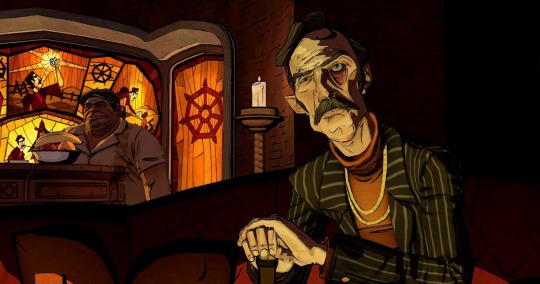
14. The Crooked Man, from The Wolf Among Us.
This was a title released by Telltale Games, who specialized in games that were interactive “choose your own adventure”-type stories. The player’s choices would determine how the stories went, above all else. In the case of “The Wolf Among Us” - based on the comic series “Fables” - the story was a sort of fantasy and film noir blend, with Sheriff Bigby Wolf (guess who he is) trying to solve a case of mysterious murders in the city of Fabletown, where characters from fairy-tales, folklore, and mythology all live. At the end of this long and twisted case, it’s revealed the mastermind behind it all is this fellow: the Crooked Man. From the moment we start realizing his involvement, the Crooked Man seems like a total and pure nasty…and he is. But here’s the genius of the character: after going through so much to reach him and finally confront him, when the time finally arrives, he isn’t depicted as a dark-hearted monster, but instead a reasonable, intellectual, and EXTREMELY persuasive gentleman. The brilliance of the Crooked Man is that he doesn’t just get into the heads of the other characters in the story, but has the capacity to get into the head of the player, and make them doubt the decisions they are making. You know he can’t be trusted and has to be brought to justice, but he’s very skilled at twisting things around, making every moment tense as you wonder whether you’re making the right choice or not. His demeanor of composed, collected rationality almost never falters, making it feel like he’s in control even when you have the upper hand. In a game all about your choices and their consequences, that’s an EXTREMELY powerful villain to have, and no other main antagonists from other Telltale titles, in my opinion, are quite as effective in THAT regard. He may not be one of the most iconic villains in history, but he’ll always be one I hold in high esteem.

13. The Moon Bear King, from Puppeteer.
All of the other villains after this character are from series or franchise works. There are multiple installments in them, and so there are often many villains to choose from. The same goes with the previous two entries, as well: Epic Mickey had three games to its name, and a sequel to “The Wolf Among Us” is in development as we speak. “Puppeteer” is an oddball, as a result, because it’s a one-and-done deal: it’s not part of a major franchise or series, it’s just one single, lonely title, and it’s not necessarily one that tons of people would know. I doubt you’d be seeing cosplays or highly-viewed videos about this game anywhere of note. However, as far as one hit wonders go, it’s a VERY good game: it’s got a wicked sense of humor, simple and addictive gameplay that still manages to be challenging, and a very unique sense of aesthetic style. It also has a very fun main antagonist: the evil and bombastic Moon Bear King. The King is an evil, gluttonous monster who has taken over the kingdom of the moon. It’s eventually revealed that he was once a humble little teddy bear, who suffered from deep insecurity, and desperately wanted friendship. The Little Bear stole the Black Moonstone, a dangerous artifact, which corrupted his desires and transformed him into the beastly Moon Bear King: a literally power-hungry demon who longs to devour the souls of all of Earth’s children. Aided by his Twelve Generals (all themed around animals from the Chinese Zodiac), the King’s plans are challenged by the hero of the story, Kutaro. The King is one of those wonderful villains who mingles humor, menace, and pathos perfectly: he’s actually EXTREMELY funny, but he’s also extremely nasty, capable of some truly horrifying acts of evil. When you learn the truth of his origins and motivations, he becomes a sympathetic character, which only adds to the layers of his personality. On the one hand, it would have been nice to see more of him, and the world of Puppeteer in general. On the other hand, I think this is one of those games where its singular status is part of what makes it so special. If a sequel or spin-off ever does come out, I shall be curious…but as it stands, the King and his source work are perfectly grand on their own.
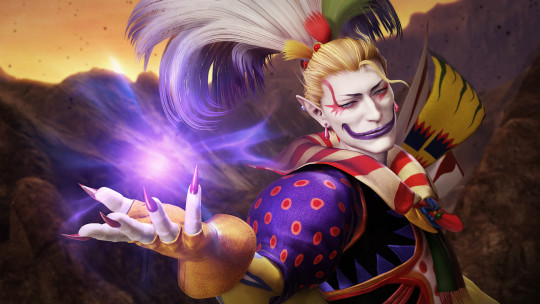
12. Kefka Palazzo, from Final Fantasy.
I’ll come right out and admit it, I’m not really super familiar with the Final Fantasy series and a lot of its characters. And that, very frankly, is why Kefka is so low on the list: he’s one of the very few characters from the franchise I do feel I know pretty well, even if I do say so myself. This is good for him in terms of his own merits, but it’s also why I don’t think I can honestly and justly place him higher. With that said, he IS a really fun villain. I know a lot of people praise Sephiroth as the greatest antagonist of the series, and he’s a good villain, too…but in my opinion, Kefka is even more interesting, as well as just a lot of fun. One of my issues with FF, and why I’m not really familiar with it, is that a lot of characters (among those I know) feel very similar, in terms of both personality and design. Kefka, however, is truly a one of a kind figure: he’s a wild, chaotic, childish, brightly colored jester who walks, sounds, and generally behaves in a way that is extremely unique compared to all the rest around him. As far as villainy goes, he’s wonderful in how he’s such a paradoxical character. Kefka is a nihilist of the highest order, who has no purpose in life other than to inflict suffering and death. While he can be manipulative and cunning, there is no end goal beyond just making others feel pain and seeing things perish. On the one hand, this makes him one of the most thoroughly vile figures in the franchise, and in some ways one of the most frightening. But at the same time, there’s a sort of sadness to Kefka: the reason he is so obsessed with destruction is because he literally cannot understand the ideas of love, compassion, or even hope. When others express those concepts, his physically incapable of comprehending them: he sees no meaning in life, because in his mind, there IS nothing but death looming on the horizon. His flamboyant and vibrant facade is exactly that: a sort of armor that hides an overwhelming emptiness, which only making others hurt seems to satisfy in any way. He is funny and frightening, tragic yet despicable, and those kinds of layers always make for fascinating antagonists. He would be MUCH higher if I just knew more about his universe in general.
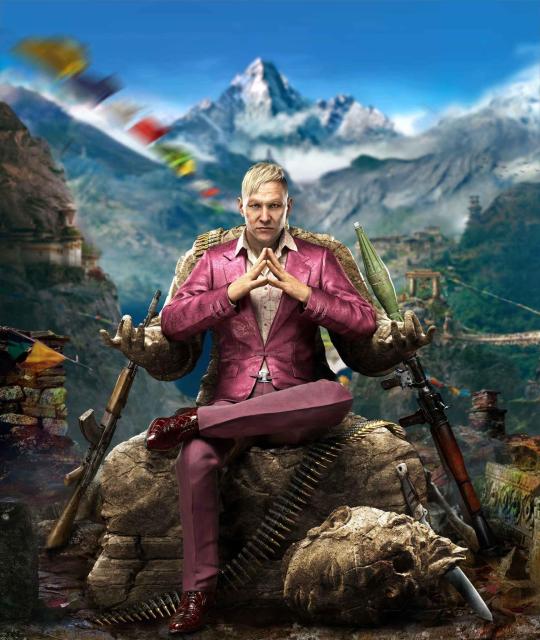
11. Pagan Min, from Far Cry 4.
I should point out that Far Cry 4 is the only Far Cry game I know especially well, mostly because it’s the only one I’ve actually played. I have not played nor even looked at much from the other games in the series, so I really can’t comment on them. (I say this because I know there are some villains from other installments people might list over Pagan. In my case, he’s really the only one I know well.) Initially, when I was planning this list out, Pagan was a bit further down…but after revisiting FC4, I discovered he was a lot greater than I already recalled. He’s a villain who really works best IN a video game world, as his presence is felt through the gameplay and various other things that can ONLY work in a video game setting. Most of his time in the game is spent on the peripherals, but his impact is felt throughout the whole adventure. He’s also an intriguingly layered sort of villain: Pagan is a tyrant and a psychopath, with a flamboyant sense of style and a very freewheeling, jocular personality. However, as the game goes on, we quickly realize more sides to his personality. Perhaps the most notable is his relationship with the main character, Ajay: he actually LIKES Ajay, and doesn’t really want to kill him, because our protagonist has ties to Pagan’s past. Pagan seems to see Ajay as a sort of surrogate son, but unlike other “father nemeses” in fiction, he never goes down the path of “you may be my son, but I will still kill you because too far gone into evil and so forth.” Instead he just…kind of gets annoyed we’re playing with “naughty children.” Right up to the end, though, he’s jolly and sympathetic with the protagonist, which honestly makes the cruelty he shows towards others all the more unsettling. A lot of this game revolves around the question of loyalty, and of rightful leadership. Pagan Min represents the nightmare of absolute power, but he also represents a sort of strange temptation…and hey, it’s not like the alternative rulers the game presents are any nicer, at the end of the day. :P
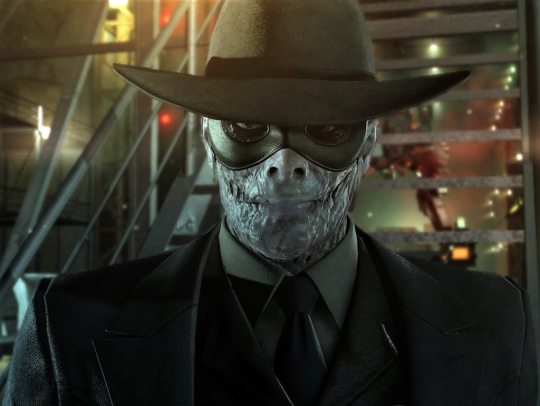
10. Skull Face, from Metal Gear Solid V.
Most MGS fans would probably place a villain with longer standing here - such as Liquid Snake, Revolver Ocelot, or possibly Psycho Mantis. And all of them are fun villains, but I am not most fans. Skull Face may only appear in one game (well…technically two games, since MGSV was released effectively in two parts, “Ground Zeroes” and “Phantom Pain”), but that doesn’t negate him placement by any means. This character seems to be one fans are polarized over: depending on where you look and who you ask, he’s either one of the best villains from the series, or one of the worst. As you can imagine, I fall into the former category. Skull Face is an extremely messed up bad guy, with a very depressing past and remarkably twisted motivations. You feel sorry for him in some ways, but in other ways, he’s one of the most utterly reprehensible villains the series puts forth. His demeanor is equally paradoxical: his physical design and some of his mannerisms are rather over-the-top, but there’s a seriousness and a subtlety to him at the same time. He’s kind of everything you want from a villain…and to top it off, he’s the kind of villain who I feel really only works in a video game. (A bit like our previous pick.) See, part of what makes Skull Face so great is that, even when he isn’t onscreen, his presence is felt: what he does in the game affects the player even when they aren’t physically facing him down, and a lot of who he is is presented in things you find hidden throughout the game. It’s these little nuggets of intrigue that make him so fascinating, but even on a superficial level, I think he’s still a pretty great baddy. The only problem with the character I have, and why he doesn’t make the top ten, is that we never really get what I feel is a satisfying conclusion for him: his story ends, make no mistake, an what happens to him isn't WHOLLY disappointing, but I feel like a final boss fight against him would have helped him make even more of an impact. Maybe that’s one of the reasons some people have a problem with him, but for me, it doesn’t ruin him entirely.
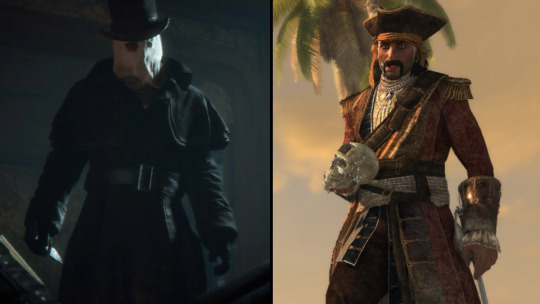
9. Jack the Ripper AND Bartholomew Roberts, from Assassin’s Creed.
Here is the other exception I mentioned earlier, and it’s admittedly a somewhat more glaring example. With the Mad Doctor and the Blot, they at least appeared in the same title together, the first Epic Mickey game. Roberts and the Ripper appear in the same franchise, but in two completely different titles and storylines. There are lots of great villains in AC, from historical figures to totally fictional characters, but when trying to decide between my favorites, I knew it would have to be at least one of these two…and after revisiting their respective appearances, I couldn’t decide between them. The issue is that I like both for similar reasons, but also for totally different ones. Both are historical criminals of great infamy, and both are my favorite fictional depictions of those figures. Each is interesting in different ways, and also despicable in different ways. Roberts is one of the main antagonists of the game “Black Flag,” and is a prominent figure throughout the story, with a big impact on things that happen. He’s also a unique villain in that he is neither an Assassin nor a Templar, but a Sage; someone caught in-between the two feuding factions. Roberts also starts out as a sympathetic character, and even becomes an ally, before eventually showing his colors as an antagonist. In the Ripper’s case, he’s only the villain for a DLC package, which is optional; it doesn’t really affect the story of the main game for his title, “Syndicate,” if you play it or not. So in that regard, Roberts has him beat. However, Jack’s setup - as a former Assassin turned rogue - gives him a similarly unique status in the universe of the games. Plus, gameplay-wise, Jack is much more fascinating; first of all, you actually get to PLAY as the Ripper throughout the DLC. Second of all, his boss fight is probably one of the best bosses in the whole series. The battle with Roberts is nothing to scoff at either, but it’s comparatively much more standard; it’s great in its historical accuracy and grandiose nature. Between the two, I found the pros and cons of each evened out; I kept going back and forth on who really earned the spot. So, end of the day, I decided to just let both of these dastardly gentlemen have it.
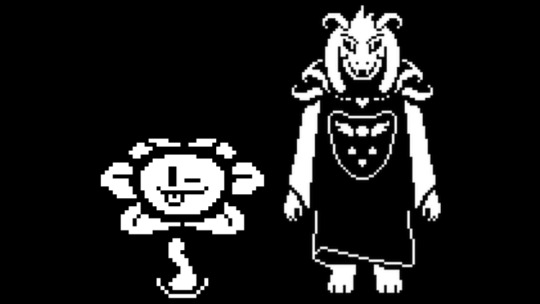
8. Flowey/Asriel Dreemurr, from Undertale.
So, talking about this character/these characters means delivering MAJOR spoilers, just to warn everyone. However, since Undertale is such a big deal at this point, and since it’s now been ALMOST A DECADE since it came out? I think it’s okay for me to speak candidly about the subject. In “Undertale,” your main character - whose name is eventually revealed to be Frisk - winds up in a mysterious world populated by monsters. The game subverts the trope of RPG titles, where you boost your powers and abilities by slaying beasts in random encounters; you absolutely can slaughter every monster in sight, if you WANT to, but if you do that…well…“you’re gonna have a bad time,” as the game says. Most of the “enemies” you encounter in the game are actually friendly, or simply acting on a sort of misunderstanding, or otherwise able to be reasoned with. There is, however, one exception: throughout the game, in all of its different paths, you are plagued by a mysterious, talking sunflower simply known as “Flowey.” Flowey is a sadistic monster who revels in death and quite literally hungers for power. It’s eventually revealed, if you take the “True Pacifist” route - which is typically regarded as the “True Ending” of the game - that Flowey is the reincarnation (or something like it) of this character: Asriel Dreemurr, the long-dead prince of this underground world. Eventually, his true form is revealed, which leads to an epic final boss. (Though, to be fair, Flowey’s own boss, found in other routes, is pretty crazy, too.) Along with it comes his backstory, which is…really quite gut-wrenching. Asriel is both one of the most dangerous enemies you face, if not THE most dangerous, and yet also arguably the single most tragic character in the entire game. There’s not enough time and space for me to go into everything about him, but suffice it to say, when you learn why he is the way he is - both as Flowey and as himself - it’s honestly pretty heartbreaking. He’s the only character who one could argue doesn’t get a happy ending, in the True Pacifist route, and yet he’s also the character who you wish could have one the most, despite all the terrible things he does by the end of the story. Between both his true form and his appearance as the demented Flowey, he manages to kind of be everything you could want out of a villain: he’s powerful, menacing, rather creepy, and yet also shockingly sympathetic. If any villain on this list most exemplifies the idea of “sympathy for the devil,” it’s probably Asriel.
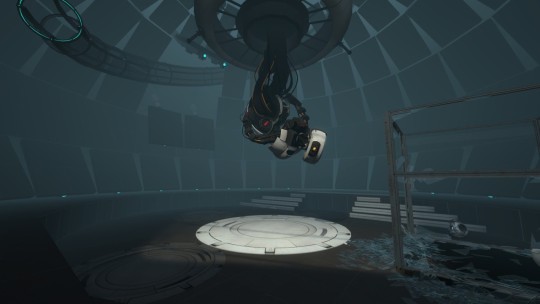
7. GLaDOS, from Portal.
This evil AI is another rather paradoxical villain. Most versions of the “Evil AI” concept - whether it be an out-of-control robot, or a computer program gone mad, depict the AI in question as somewhat morally ambiguous. They typically are just trying to carry out their programming, or see themselves in the right and humans in the wrong, seeing people as flawed and themselves as perfect. There’s a coldness, a detached-ness, to such creations, typically speaking; they aren’t necessarily EVIL, they’ve just gone to an extreme measure. GLaDOS, however, is different: she IS evil, plain and simple, and it’s not entirely clear why. She is openly sadistic, cruel, and murderous, and uses her power and presence to manipulate others in various ways. GLaDOS actually has a conscience, unlike most characters of this sort, but she deliberately ignores it, and her personality and desires go well beyond simply furthering science as she claims to do. What’s fascinating about GLaDOS, however, are the complex emotions that arise between her and the player’s main character, Chell. On the one hand, the two are arch-nemeses, but on the other hand, the two are almost friends. GLaDOS yearns to kill Chell in the first game, but Chell also relies on her a lot in both Portal games. GLaDOS is cynically sarcastic, passive-aggressive, and bitter towards Chell, in lots of ways and for lots of reasons, yet she also admits to thinking of Chell as “her best friend.” Indeed, GLaDOS seems pretty pissed at the player during the final boss in the first game, and after her defeat when we meet her in the second game, but not in a “How dare you, mere peon!” way so much as a feeling of bizarre, genuine betrayal. It’s the twisted emotions of GLaDOS, and her unique nature among other characters within her own archetype, that makes her so intriguing. She is, once again, a villain who melds so many different layers - humor, horror, and surprising empathy (if not necessarily sympathy) - making for a well-rounded and memorable antagonist.
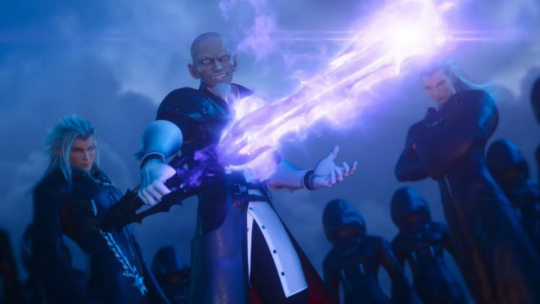
6. Xehanort, from Kingdom Hearts.
“Kingdom Hearts” is one of my two favorite video game franchises (we’ll get to the other of those two soon), so it seemed only fair I place the main antagonist of the entire series high up. I nearly gave him a spot in the Top 5, but...well...when you see who DID take the number five slot, you'll understand. In some ways, having said that, I think Xehanort is one of the most underrated video game villains: despite the popularity and success of the KH series, I rarely hear Xehanort’s name mentioned when people bring up famous video game baddies, and I also don’t typically see much cosplay of him or anything like that. For me, though, he’s definitely one of the greats, and also one of the single most persistent buggers. It would take FOREVER to describe EVERYTHING that goes on with this guy, because, essentially, describing Xehanort’s story and setup in any meaningful way would mean going into the lore of the entire KH franchise, and…yeah, we’re not doing that here, if ever. XD For now, suffice it to say he’s a marvelous villain in how he permeates the whole franchise: everything that goes wrong in the heroes’ lives is either directly or indirectly thanks to Xehanort’s meddling, and with multiple different forms of himself - from Xemnas to “Terra-Nort” to the Seeker of Darkness - you can’t turn a corner without running into some version of this guy causing trouble somewhere. His motivations and character archetype ride a fine line between mad scientist and dark wizard, and despite causing all sorts of havoc across many different worlds…when his story comes to an end, you do sort of feel sorry to see him go. It’s been indicated Xehanort’s ultimate defeat may not be the end to KH as a whole, so time will tell what other villains could come in the future. And who knows? Considering how many times this character and his many forms have cheated death before, maybe we still haven’t seen the last of him…

5. Dr. Eggman, from Sonic the Hedgehog.
I’ve only actually played one Sonic game, that being “Sonic Unleashed.” (Apparently, that game is sort of a polarized one among fans.) However, I have looked at things from other games, as well as come to understand the franchise through its other outlets, such as television and movies. So while Sonic isn’t necessarily a universe I’m a pure-blooded expert on, I know a lot more about it than, say, Final Fantasy. One thing that’s consistent in every version, in my opinion, is this: Dr. Robotnik, also known as Dr. Eggman, is ALWAYS my favorite character. Eggman is one of the most iconic of all video game villains, perhaps second only to Bowser from Nintendo’s core lineup. He is the quintessential mad scientist: a greedy, ambitious lunatic and robotics expert who seeks to, of course, take over the world. If only he could just smash, shoot, or otherwise scuttle that annoying hedgehog who keeps ruining his dastardly schemes! Eggman is one of the most versatile villains in gaming, I would say, as well; different depictions of him throughout the Sonic franchise have handled the kind of villain he is in different ways. Some takes on Eggman are honestly VERY scary, making him a truly threatening and grotesque villain with no redeeming values whatsoever. Others make him into a clown, a sort of roly-poly goofball who isn’t really a threat so much as a persistent nuisance. My favorite ones, however, blend a bit of both; making Robotnik a character who can be funny, and perhaps even sympathetic, but is nevertheless totally capable of committing absolute atrocities. I always love villains who have that kind of multi-layered aspect to their personality, being empathetic and entertaining while also still able to pose a decent threat and act as a true obstacle to the hero. If there’s one thing that Eggman is consistently shown to be in every depiction, it’s determined; some might even say stubborn. No matter how many of his machines get ruined, no matter how many plans for global domination are foiled, he always comes back ready for more. He’s basically the Wile E. Coyote of video games: forever chasing a super-speedy foe, but seemingly destined to always come second place. Sometimes, that simple formula is all it takes to make a character fun.
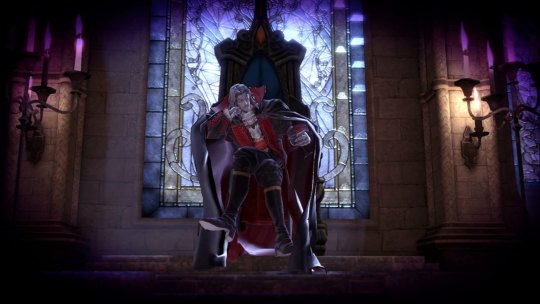
4. Count Dracula, from Castlevania.
Alongside Kingdom Hearts, “Castlevania” is one of my two favorite video game franchises, and…to be honest, one of the single biggest reasons why is this guy. The Castlevania series started out as a tribute to classic horror and monster movies, featuring various references to both Universal Monsters and Hammer Horror. While it hasn’t abandoned those roots completely, over time, it’s become more and more its own thing, and most of the really famous classic monster figures - such as Frankenstein’s Monster, the Mummy, and the Creature from the Black Lagoon - while certainly persistent figures throughout the franchise, have always sort of remained background figures. The one great exception is the king of the monsters: the Prince of Darkness, the Lord of the Vampires, the Count of Transylvania…the One and Only Dracula. Castlevania’s Dracula may not have the automatic recognizability of some film versions, but over time, he has become more and more iconic, as he is the main antagonist of the whole franchise. And considering the franchise has been around since the 1980s, and has not only had multiple games under its belt but two very successful animated series adaptations, it’s not hard to understand why. Even when Dracula isn’t the final boss or main antagonist of a specific game, he’s always present in some form or another, and the different paths the franchise has gone down have evolved this villainous vampire in all sorts of ways. He’s gone from a pretty straightforward villain, to a sympathetic and tragic antagonist, to even getting to be a protagonistic anti-hero figure. And with every interpretation, he is always interesting and intimidating. He’s easily one of my favorite interpretations of Bram Stoker’s greatest creation, and has earned every ounce of respect as one of video gaming’s most classic adversaries: he’s just as immortal in those ranks as anywhere else.

3. Bowser, from Mario Bros.
Well, you can’t have a good list of video game villains and not at least mention this guy. As I said before, alongside Dr. Eggman, Bowser - the King Koopa himself - is quite possibly the single most iconic antagonist in video gaming history. Heck, whenever people bring up video games in general, the Mario Bros. series is probably one of the first examples to come to mind. Just as Robotnik will never seem to give up chasing Sonic, Bowser is thoroughly unceasing in his desire to abduct and wed the beautiful Princess Peach. No matter how often she spurns his advances, he always comes back to try a new plan to conquer the world and gain her hand in marriage…and every time he does, Mario is there to stop him, along with Luigi, Yoshi, Toad, and all the rest of the plumber’s playmates. Also, much like Eggman, Bowser is as versatile as he is iconic: some versions of the character depict him as a genuinely monstrous threat that needs to be beaten, others show him as more of a buffoon who tends to be more annoying than truly dangerous. Once again, like Dr. Robotnik, I like Bowser best when he’s somewhere in the middle: able to be funny and perhaps even sympathetic, but also still being a genuine menace and a villain to be reckoned with. What boosts Bowser above Eggman is primarily that I know and understand the Mario universe better than the Sonic universe, and I have a slightly bigger attachment to Bowser as a result. (Plus, I…sort of have a crush on him, I’ll confess. I can’t help it, he’s a big, burly, man-eating monster with a deep, powerful voice, I’M WEAK. >///> )

2. Carmen Sandiego.
You won’t find Carmen on a lot of other people’s video game villains lists, admittedly not without good reason, but there was never any doubt in my mind she’d rank highly here. If you only know this character through the Netflix television series, and its spin-offs, then you’re probably confused: in that version, Carmen is the main protagonist, and was depicted as a sort of misunderstood heroine. She’s akin to Arsene Lupin or The Saint: using crime to battle crime. That is NOT the original interpretation of Carmen Sandiego: Carmen had a loooong history before the Netflix reboot, and it started with a series of computer and console games, where she was the main antagonist. The games were “edutainment” packages: meant to offer educational value as well as entertainment. They were primarily focused on teaching children social studies, like Geography and History (although some other fields got covered, too, such as Math and English). I grew up playing a LOT of “edutainment” games (my mother was, and still is, a schoolteacher), and most of them were kind of “eh.” But the one series I absolutely loved, and STILL love, was Carmen Sandiego. The premise of the games had Carmen as the World’s Greatest Thief: the leader of a secret cabal of robbers and spies known as VILE, who sought to plunder the world’s greatest treasures. Everything from the Statue of Liberty, to Elvis’ Pink Cadillac, to the Mona Lisa…Carmen and her cohorts would steal everything rare or one-of-a-kind under the Sun, no matter how implausible the crime seemed. Throughout the franchise, Carmen was consistently depicted as a glamorous and mysterious character, a sort of teasing incentive: we wanted to capture this illusive, fascinating, shadowy woman in her fine red outfit, and the urge to know what it would be like to go toe-to-toe with her directly kept people playing. As time went on, Carmen’s character was developed further, giving her a more morally ambiguous personality, and a backstory that was both revealing…and yet still full of tantalizing holes. You never really knew why Carmen did what she did, or what she would do next, or where she could pop up. It was the eternal mystery of the character that made her so interesting. While her career has had ups and downs, she’s never really gone away, and while I do like the Netflix version and its more heroic depiction of her…I will always prefer the Classic Carmen, and all her villainous ways. The thrill of the chase she provided always made learning fun.
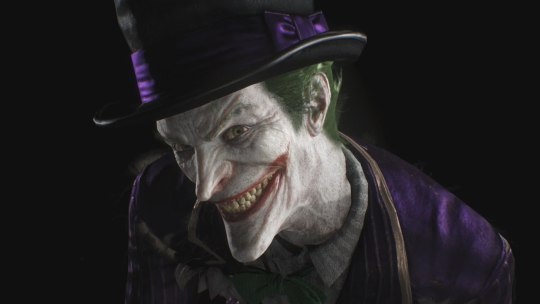
1. Joker, from Batman: Arkham.
As I think I’ve said before in the past, the Joker is quite possibly my favorite villain of all time. And as I ALSO think I’ve said before, Mark Hamill’s take on the character is my favorite version of the same. So it stands to reason, just by that logic alone, that the Batman: Arkham series would have my favorite villain in video games, since it features Hamill playing my favorite baddy, and it’s arguably his greatest work with the character aside from the DCAU. (Oh, and Troy Baker also took the reins a couple of times; he’s freaking awesome, too.) While the Joker was not the main antagonist of every single game in the franchise, he was always - as the character ever is - a persistent and impactful thorn in the Dark Knight’s side. The series focused a lot on the twisted, strange relationship between these two arch-enemies, and their seemingly eternal duel with each other was what drove much of the plot in each game, and provided many of the most interesting moments. Even after dying in-universe, officially, the Clown Prince of Crime would continue to plague the Caped Crusader from beyond the grave. You can really see the whole series, overall, as an exploration of the rivalry between these two characters, from where it started to how it ended. Other villains came and went, and were portrayed in a variety of ways - some better than others - but the Joker was consistently present, and consistently well-handled, making for not only one of the best versions of the comic book creep that’s ever been, but one of the most iconic and lauded villains in video game history. He is part of the reason the Arkham games were a success, as much as any of the gameplay and atmospheric elements, and there is so much you could analyze or say about the character - both onscreen and behind the scenes - to explain why. It’s therefore no surprise at all that he takes the cake as My Favorite Video Game Villain.
HONORABLE MENTIONS INCLUDE…
Albert Wesker, from Resident Evil. (I just don’t know a ton about these games or this character, so despite his iconography, it didn’t feel fair to place him in the ranks.)
SEVERAL Villains from American McGee’s Alice. (The Queen of Hearts, the Mad Hatter, and the Dollmaker from “Madness Returns”, in particular. All are great villains, but when I really looked at things, I felt other characters earned it more, and I felt like three villains at once would have been MAJOR cheating.)
Doc Ock, from the PS4 Spider-Man Game. (Wasn’t sure how else to credit that title. Also, I haven't played the sequel yet, but I hear Kraven the Hunter there is AWESOME.)
Ganon, from The Legend of Zelda. (Same issue as Wesker.)
Gruntilda, from Banjo-Kazooie. (Very nearly made the list, but I just have a bigger fondness for Epic Mickey.)
Rollo Flamme AND Fellow Honest, from Twisted Wonderland. (Oh, you all know I couldn’t ignore this one. These two are the most antagonistic characters so far, one could argue, as we really haven’t seen them become protagonists - at least not yet - and they do arguably the most reprehensible things of any character in the game. However, because of the way this whole game works, not sure if they really count enough to make the list.)
Shao Kahn, from Mortal Kombat. (Same issue as Gruntilda.)
#list#countdown#top 15#video games#video game villains#batman: arkham#joker#carmen sandiego#bowser#nintendo#mario bros.#count dracula#dracula#castlevania#xehanort#kingdom hearts#kh#dr. eggman#sonic the hedgehog#sonic#glados#portal#asriel#asriel dreemurr#flowey#undertale#jack the ripper#bartholomew roberts#assassin's creed#syndicate
19 notes
·
View notes
Text
Well, Tumblr decided to bug out on me and I've now lost the original question that was asked, but someone had asked for my favorite series (be it manga/anime/movies/Tv/etc), and this was my response.
(first of all, so sorry for losing the question! I should have taken a screenshot or something when Tumblr wouldn't let me post)
It's all good, I enjoy getting these types of questions because they make me think about this stuff haha. I'm not one to really do well with the idea of favorites, so having to pin down stuff like this can be interesting for me!
That said, for this one I might just stick with anime for the list to make it a little easier. I can definitely do a top ten of manga or other stuff later on though. Also, this list will be in no particular order because I'd be stuck forever trying to figure out a satisfying order for them.
Sonny Boy
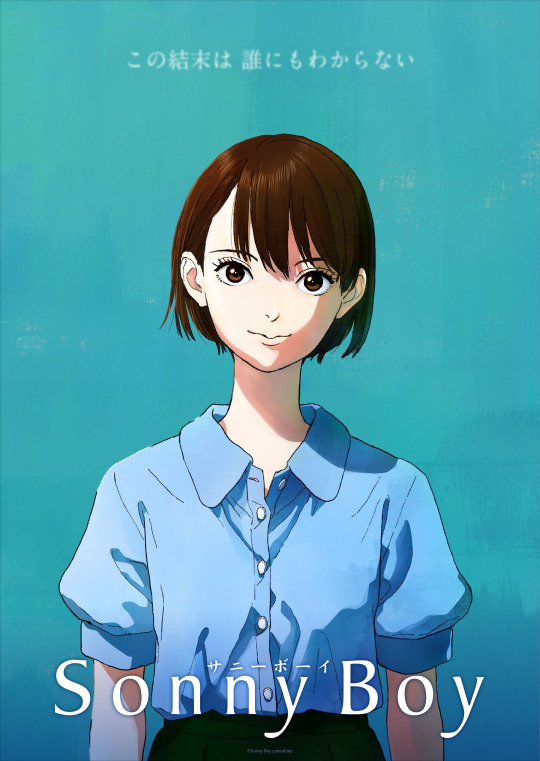
I think it's a very fair point to argue, that at this stage in his career, Sonny Boy is Shingo Natsume's magnum opus. There's just not much else to it. It's a series that he created, from his own mind and talent, and he executed on that. There are very, very few people that work in anime that can manage a feat such as that. In terms of story, I don't have any issue with claiming Sonny Boy is the pinnacle of high school storytelling. It stretches the fabric of reality so far that you might struggle to claim that it's about high school, but the longer that you spend with it, the more undeniable a fact it becomes. Or maybe you could generalize it to the human condition, or how the cracks in society will fester and form no matter the condition, or how authority will always appear in a self-serving manner, or this or that or any concept under the sun.
Terror In Resonance

Call me crazy, but there's quite a few reasons why this is the Shinichiro Watanabe anime for me. Bebop and Champloo have rose colored glasses that adorn every fan in the community, so I feel like it's hard to really take a proper look at it compared to Terror In Resonance (even though it has a similar amount of users on MAL). As a Mappa project, it is simply the best they've ever been from start to finish. As a concept, Watanabe's approach is impeccable as it examines the frustration and sorrow of displaced children in a society that never wanted them. It's powerful, concise, and from start to finish an incredibly focused series filled with some of the crowning achievements of animators in the industry. Seriously. Takashi Hashimoto, the animator for this cut, actually did all the math to calculate the speed of the smoke as it fell and moved. Some of the best work you'll see on an anime.
Vivy: Fluorite Eye's Song

I am a big, big fan of Tappei Nagatsuki's work, so being able to experience an anime that is entirely his vision of the work is really impressive. It's one of the biggest struggles with artists, I find. Understanding their work through different mediums. What you see as an anime is not what they created as a manga, or light novel. But this is different, it is Nagatsuki's (and Umehara's) sole vision, the entire intent behind their creativity. And WIT knocked it out of the park to an insane degree. As a post-AoT studio, they showed just how far they can push their creativity and execution on a series beyond human. Incredible story, incredible animation, arguably some of the best hand to hand combat we've seen in an anime in a very long time. It's just that good.
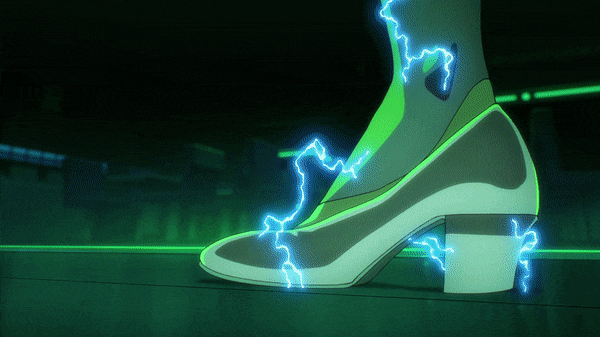
Cyberpunk: Edgerunners
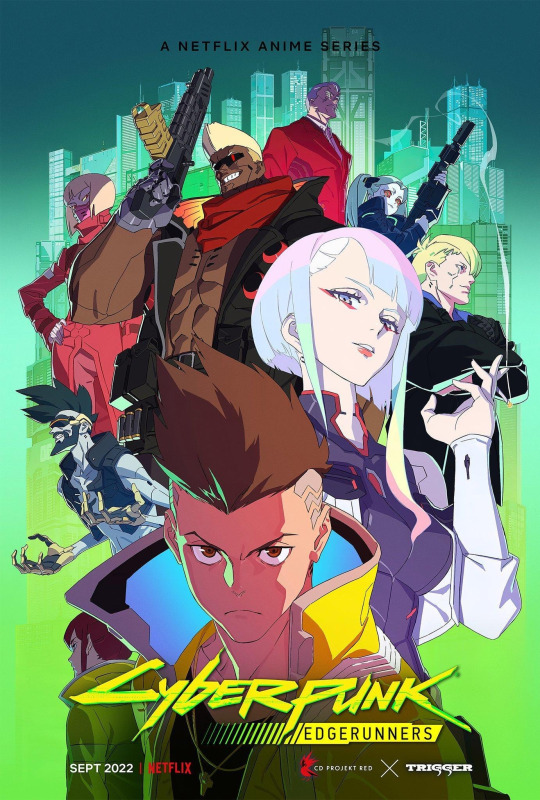
Maybe you see a trend going on with my picks, and while yes it's partly recency bias, it's also a gravitation towards anime originals. I'll add a piece to that at the end, but this is about Edgerunners right now. I was in high school when the video game was first announced. That's a decade ago, now. I played the shit out of 2077 when it dropped, and I'm absolutely eating up Phantom Liberty currently. It is then, absolutely no surprise, that I've placed Edgerunners on a pedestal. But of course, there's also a reason that Edgerunners is in the top 100 anime on MAL, and why it's Trigger's highest rated anime. It's just that damn good. An incredible story revolving around Night City and the themes that Mike Pondsmith laid the groundwork for decades ago. A true tribute to the tabletop game and the genre at large.
The Tatami Galaxy

I don't think there's a way I couldn't put The Tatami Galaxy on this list, truthfully. Of course, that also encompasses the sequel ONA The Time Machine Blues, and spinoffs like The Night Is Short, Walk on Girl. Tomohiko Morimi is a genius, Yusuke Nakamura is an icon, and Masaaki Yuasa is a savant. Incredible work for such an incredible story and message about the pursuit of perfection and the beauty that lies in the present. Arguably, much like titles such as Sonny Boy, these are 100% must watch titles for an anime fan. I'd highly recommend the others still, but these two represent such core and important aspects to how people choose to lead their lives and the frameworks that they do so within, that I strongly believe it's a requirement. I also wrote a review on the novel when I read it in January of this year.
Heike Monogatari
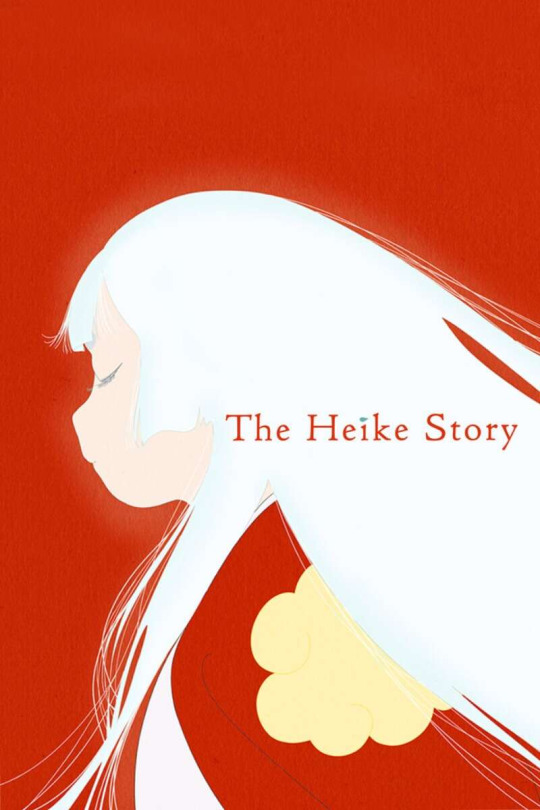
I think history is a very important thing to understand. I also think that history can be presented as obtuse, disinteresting, or too literal - especially in relation to history stories or myths. Heike Monogatari by Science Saru is arguably one of the greatest examples of how to display a modernized version of such a foundational tale to the history of Japan. It's also an incredibly powerful moment for the director, Naoko Yamada, as it was their first real work since the arson attacks on her home studio of Kyoto Animation. Because of the weight of her past, her work beyond words on this anime feels that much more powerful considering its messages about the past and fear of the future. It's wonderfully emotional, and contains one of my favorite closing scenes to a series.
The Saga of Tanya The Evil
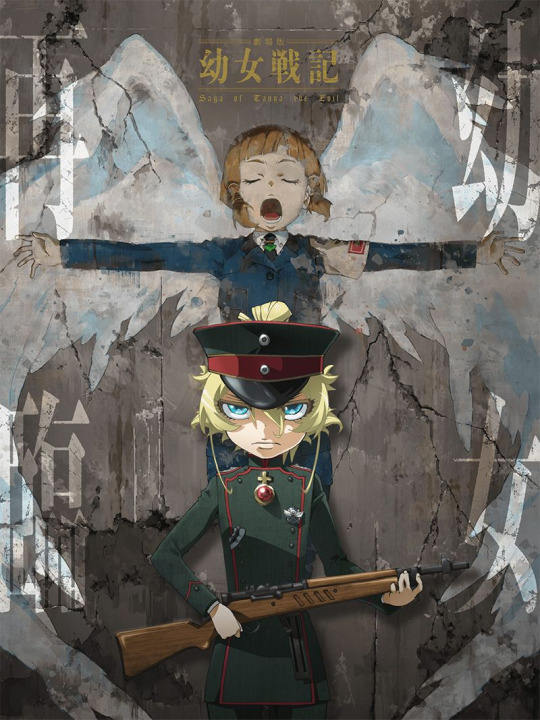
Light novel aside, anime quality aside (though both are great), there's a separate reason this title is featured on this list: the adaptation. It is, for lack of a better term, borderline insane as an adaptation. It bears almost no similarity to its source. The tone is different, the scope and scale differ, there's significant changes in terms of narrative, and even the order of large scale events differs. But still, somehow, it remains a fantastic series. Bearing nearly zero resemblance to what it claims to adapt, it is something that I love. It's an incredible feat, and the gold standard of its one-of-a-kind approach to adapting a light novel.
Mononoke
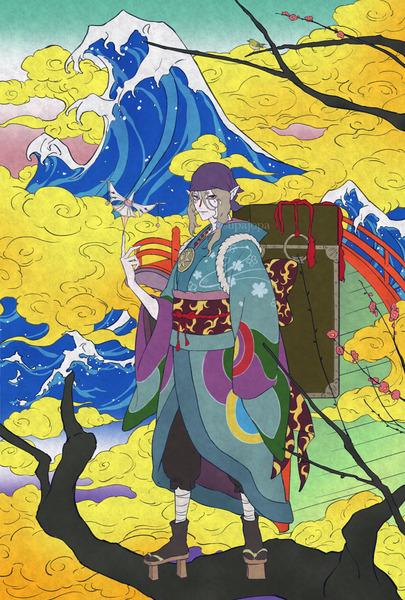
Horror is a very hard thing to do right, at least in my opinion. Many get suckered into thriller territory very quickly, and avoid the psychological nature of horror. The immovable nature of something fearful standing in front of you, the slow descent into madness and despair. Mononoke grasps that incredibly well, and earns a spot on this list because of it's appeal in that manner. Also, the art is just incredible, personifying the more classical style that would be associated with the creatures and myths that pepper the story. I'm incredibly excited to see what comes from the upcoming movie.
Welcome To The N.H.K

While it may differ between its three formats, the core of the story stands strong. Impossible to put into words, it's more of a descent than anything. A descent that turns inwards on each of the characters as they slowly lose their grip on reality, as they continue to fall apart, piece by piece. I have my qualms about how they choose to end it, but I am a very bitter man at my core so it's more a personal difference than a quality one. Regardless, if you want an acid trip down the rabbit hole of depression, mania, bipolar disorder, borderline personality disorder, and all manner of other illness, there's no better story than Welcome To The N.H.K.
Toradora!

There's something special about Toradora to me. Is it the era that the anime comes from? Is it the appeal to a classic style of romance without falling prey to the issues of the layout? I'm unsure. But something about it feels so… comfortable, to me. I could watch it again and again and enjoy each minute. It's probably not the best romance anime out there, but it's one that I'll always be drawn to.
And with that, the list is over. Just to provide some extra context and honorable mentions, I'd love to have put series like Alien 9 or Monogatari on the list, but the challenge with them is the fact that the first is a shorter OVA, and the latter is a much larger series encompasses nearly too much to explain in this sort of context. There's really quite a few series like that that I struggled with when forming this list, but they're still really great titles nonetheless.
Anyways, the anime original point. While it's sort of an unconscious thing, I do realize what I do with it. Anime originals present something that you can't experience elsewhere. They are the end all be all of their creative vision, and that excites me more than a manga adaptation. Following someone else's blueprint vs creating your own, obviously one is more interesting than the other. And that sentiment extends to some of the other titles on the list like Heike Monogatari which approaches a classic story with a radical new viewpoint, or Tanya The Evil which basically forgoes the vast majority of its source material. It's really something I struggle with at large with adaptations. So many people want to leave their marks on the work, but quit just short of doing so in a meaningful manner. Very few go the mile to say that they did something in regards to the work, and instead meddle with it in minor ways which can negatively impact its reception as the original material. A great example of valuable changes is Heavenly Delusion. The team under Hirotaka completely re-arrange the order of events in the anime, and in doing so elevate the series in a way that only they can. Anyways, I digress, a discussion that I should leave for another time. This is my list, it may not be the best list out there, but it is mine.
#sonny boy#shingo natsume#zankyou no terror#terror in resonance#mappa#shinichiro watanabe#vivy: fluorite eye's song#vivy#tappei nagatsuki#cyberpunk edgerunners#cyberpunk anime#trigger studio#studio trigger#the tatami galaxy#tatami galaxy#yojouhan shinwa taikei#yojouhan time machine blues#time machine blues#the night is short walk on girl#masaaki yuasa#heike monogatari#the heike story#science saru#tanya the evil#the saga of tanya the evil#youjo senki#carlo zen#mononoke 2007#welcome to the nhk#nhk ni youkoso
20 notes
·
View notes
Text
i really enjoyed that Wrestling Isn't Wrestling video essay before i started watching wrestling, but the more i watch wrestling the more inclined i am to disagree with the basic premise, at least as it shakes out in practice - wrestling is wrestling because if it wasn't wrestling then it would (or should) be something else. Carlos Saura's Blood Wedding is a flamenco movie and that's important because 1) the story exists in the medium in a way it cannot in Lorca's original play (or even as live performance in general) 2) flamenco is cool and sexy, and a great deal of why it's one of my all-time favorite movies is that Antonio Gades was just so fucking good at dancing. there's a lot of video games that think that storytelling should happen in cut scenes and dialogue, and you wind up with a poorly-told story taped on top of mediocre gameplay. games are games - if you're not telling the story through the game mechanics then why didn't you just make a VN? what's the point? i enjoy promos as much as the next mark but the quality of writing and performance is so all over the place, like it's charming but the real reason it works is the actual story is happening within the fight. if you wanted a story about wrestling that had wrestling in it but it isn't actually wrestling you could just watch GLOW, which had good scripts and acting. instead of, you know, [redacted to save my notifications on the off-chance this breaks containment]
#wrestle tag#man i still miss glow. forget ofmd that's my 'queer rep niche genre show that was canceled too soon' hill to die on
3 notes
·
View notes
Text
I think I've explained this before on my blog, but for everyone who's new here, I have a massive hate boner for supplementary material and extra lore books/comics/etc that are paired alongside Transformers continuities specifically because of my bad experiences being into Star Wars and Warcraft as my previous fandoms lol.
World of Warcraft was a fucking nightmare because once the franchise got big enough, they started releasing stories in the forms of comics and novels and stuff. And the lore in these supplementary materials would be necessary to understand a lot of plot lines that happened in the video games themselves, so it was really annoying because if you liked Warcraft for the lore (as I did) then you had to either buy all of these novels and comics or go on Youtube and read summaries from people who had. And then ON TOP OF THAT the Warcraft writers regularly did retcons and rewrites to the lore, sometimes multiple times for the same characters/plot points/etc (I'm looking at you, Wrathgate), to the point that they basically released new lore bibles every expansion or every other expansion. And it was just really fucking annoying because while I would have loved the chance to have more lore about WoW that didn't fit within the storytelling medium of a video game, in practice it felt more as if Blizzard was just trying to get WoW lore enthusiasts to shill out more money for supplementary materials, but since their writing was so inconsistent that they made constant retcons anyways, it basically felt like a waste of money because why bother buying the lore bibles and caring about continuity when it would probably get retconned in an expansion or two anyways? And then this practice of publishing vital lore in supplementary materials made it so that if you did nothing but play the video game, you would miss out on a lot of lore that ranged from fun tidbits about fan favorite minor characters to entire fucking plotlines informing the entire premise of the new expansion. So basically you had to shell out money to be able to see the new lore that should've been in the actual game but instead was in some random novel that you probably don't care about reading because you're a WoW fan to play a video game not to read a bunch of random novels. And then the Blizzard writers would probably retcon things later so why bother?
And then Star Wars was infuriating because I became a fan during the Sequel Trilogy, which as we all know is a fucking travesty of shitty writing and lack of continuity. The ST is absolutely RIFE with vital information being contained entirely in supplementary materials with little to no way of inferring it just from watching the movies, which were supposed to be self-contained narratives in themselves. Do you want to know how and why Ben Solo destroyed the Jedi temple and became a Knight of Ren? You have to read a comic. Do you want to know how the fuck the Resistance recovered from being a single spaceship full of people to a functioning army by the start of TROS? Read a novelization. Do you want to know what Kylo Ren's motivations were as the new Supreme Ruler of the bad guys and what he's been up to between movies? Read some comics and novelizations. Do you want to know why there's a random fucking army of dudes keeping Palpatine alive on some planet in the middle of nowhere? Read a tweet from the LucasFilm twitter account explaining it. Like, the writing of the movies made no sense and there are HUGE gaps in the narrative that aren't explained in the movies. Instead of just planning out the storyline of the movies and hiring competent writers/directors who would make tight, well-written movies that explain everything to a casual watcher, they decided to spread out vital lore information in comics, novels, novelizations, and other random bullshit.
Do you see now why I hate supplementary material so much lmao? In my experience, when companies have a main story (be it a cartoon, a movie/movie series, etc) and split up lore into supplementary material, such moves are nothing more than a cash grab attempt at swindling fans of the franchise into shelling out money for story details that would have been shown in the actual main story if handled by competent writers.
It's why I hate stuff like TFA's Allspark Almanac and other supplementary materials so much. Sure, there's some stuff in there that lines up neatly with stuff that was shown in the actual TFA cartoon (I'm thinking of the Autobot prison camps that drove Waspinator insane and the way that the Jettwins were created by experimentation), but a lot of the fan favorite details that fans like to incorporate into TFA fanon don't show up in the cartoon literally at all???? Like how supposedly, the Decepticons used to be warbuilds and the Autobots were workers, and the Decepticons rebelled because they didn't want to be used as fodder for wars. You would have literally no way of knowing that just from watching TFA alone and that's why it feels like such horseshit to me; it doesn't show up in the actual TFA cartoon, so if you went through the trouble of buying/finding this Almanac then the extra knowledge you get from it wouldn't be reflected in the cartoon, so it's basically as if the lore doesn't exist and all you got was a bunch of random trivia to put in your headcanons.
I know some fans really enjoy getting extra material exactly BECAUSE it's headcanon material, but to me it feels more like a compensation for rushed/lazy writing at best and an outright money-grab at worst.
7 notes
·
View notes
Note
least favorite video game series/why + least favorite MCR song 😈
My least favorite video game series is not a series but every game made by David Cage ever. The thing about series, especially video game series, is that there's usually at least one good installment, even if it's only the first one. David Cage has never made a good game in his life. Not only are they terrible because the gameplay is almost exclusively quicktime events, or because David Cage is incapable of writing dialogue that doesn't sound like it was written by an alien who's been observing earthlings for two weeks, or because his """stories""" contain plot twists that make even the worst Shyamalan twists seem like genius, or because he tries to engage in social commentary in the most zero effort racist way (the robots have to stand IN THE BACK OF THE BUS), or because of his zero sum black/white view of morality, but because he clearly doesn't care about video games as a medium. It's so clear that he's a failed screenwriter who couldn't get a foothold in the film industry because his stories are nonsensical garbage. At no point in any of his games does he engage with the medium of games, and the unique power it can lend to storytelling. It's all made worse by the fact that some genuinely interesting ideas are all destroyed by his film bro mindset. For example, Indigo Prophecy (aka Fahrenheit) starts with a POV switch that has you, PC 2, solve a murder you committed as PC 1. This is fascinating and a great idea for tension in a game! Unfortunately this game quickly unravels until the final battle has you FIST FIGHTING A HELICOPTER. This game is supposed to be a grounded police procedural with supernatural flavoring. WHY AM I FIGHTING A HELICOPTER. (In quicktime events, obviously.)
Heavy Rain similarly has three different playable characters solving the same crime, but the game has a mechanic where you can HEAR THESE CHARACTER'S INTERNAL THOUGHTS. And then the big twist is ONE OF THEM IS THE MURDERER. Even though in an earlier scene, where he is playable, you can listen to his thoughts which say "I wonder what's taking this guy so long". BRO YOU KILLED HIM???? Why would you have this mechanic on a game that relies on withheld information???? This doesn't even get into the fact that on a gameplay level, the quicktime prompts are often incomprehensible, and sometimes don't read correctly even when you input them correctly. There's also a major plot point that's just dropped. No explanation. I have no idea why SO MANY PEOPLE consider Heavy Rain a good game. I simply don't.
There's actually quite a few MCR songs I don't particularly care for, mostly off their first album. Overall I think Bullets is a good album, and it has some real good fucking songs, but there's also more than one track where you can literally HEAR the fact that their drummer can't keep a consistent beat and also refused to use a click track, and Mikey was too inexperienced (read: was actively being given a bass crash course masterclass by Ray) to compensate for that. I think you can hear this most clearly in This is the Best Day Ever: the drums are slightly off from the rhythm the guitars are putting down and you can actually hear Gerard struggle to keep up with the off-tempo. His vocals here are weird in general on this one, not my vibe. (I did like the song when I heard it performed live, aka with a good drummer and all of them with 20+ years of experience of professional musicians.)
6 notes
·
View notes
Text
Not a new or smart take but thinking today about how the way mechanics and gameplay in rpgs or video games can help tell the story reminds me of the relationship of form/structure and meaning in poetry... Form follows function... I mean the discussion of video games as a storytelling medium versus poetry is a entirely different one (and v interesting to think about in its own right), here I am just thinking about the way two stories within the same medium can be about similar themes/premises but what may seem like minor differences in the mechanics (or the structure) can have a marked impact on the nuances of those themes, how they're presented, the resolution of those themes (or perhaps lack thereof), etc. In college my favorite lit major thing to do was close reading wherein you would analyze how a poet or writer uses language to facilitate the story they are trying to tell and sometimes I find myself wanting to do something similar but for mechanics in games it's just so interesting to dig into why creators of these stories or games or poems might make the choices they make to say what they want to say!
#sarah.txt#this post is nothing lol#also im not a gamer (or at least not a prolific or v skilled one shdjdjd)#just been playing cozy grove and spiritfarer concurrently in recent days#and theyre both cozy management games about helping spirits find peace with their memories and lives#but the gameplay is v different so the themes and stories are v different#how the mechanics and the writing ans the characterization of these games are intrinsically intertwined#in this essay i will -
4 notes
·
View notes
Text
i Know i'm thinking about this way harder than i should but octopath traveler has me analyzing the functions of video games
everyone knows i have mixed feelings about octopath 1. the writing is atrocious and the characters are bland. but it's a genuinely fun game with unique gameplay concepts that make me want to keep playing it and it has my favorite soundtrack of all time. so i still consider it one of my favorite games, even though at the same time it drives me nuts. so that got me thinking...was it a Good game? how can i answer that question?
my first thought was to figure out whether it was successful in its meta goals; i.e., the general goals of a classic JRPG, styled as it was. and to figure that out, i had to break it down.
first, i'm going to say this: i'm ignoring the primary goal of "making money". octopath was made by TWO AAA studios. i KNOW they want to make money. that aside, though, there are elements to video games as an art form that serve as a means to make that money, so...whether you like capitalism or not, these points still stand.
now. what was octopath trying to do?
it's a classic JRPG with those 2.5D graphics made by Square Enix...so one of the most glaring goals was to evoke nostalgia. and i'd say they succeeded at that, with their extremely familiar character tropes, settings, and orchestral score. it hearkens back to Final Fantasy games of yore, like Bravely Default did, but they also put their own unique spin on it so it feels just nostalgic enough without being redundant.
however, that aspect also held them back in the narrative department. now, JRPGs in particular are known for being narrative-heavy, and storytelling is important to the medium even moreso than the gameplay (as opposed to western RPGs, where open worlds are the default and story is sidelined for cool gameplay gimmicks). octopath is a story-heavy game; you're following EIGHT narratives throughout the game, with a promise that those eight coalesce into a unifying crescendo. except...that's not really what happens? i mean, there's a final boss/true ending/whatever, but as a whole the eight stories are kept completely separate, even though they join the same party at some point. i won't get too far into it--i've said enough about this point already--but that aside, what writing there is is incredibly contrived, cliched, and uninteresting. it's not all because the game itself is one big nostalgia bait. there was only one (!!!) writer in charge of all of this, after all. but, at least to me, i can't say they succeeded at bringing something new to the JRPG table when there are so many other contemporary games with so much more meaningful plots and characters.
that being said, i also just don't think that was one of their priorities. i mean, if it was, they'd have more than one writer. lol. eight stories. fuck's sake. anyway, it has another Big goal, one that most modern video games share. and that is aesthetic appeal. octopath is a Gorgeous gorgeous game, and they basically pioneered the 2.5D graphics bandwagon, so i Must give them credit. the sound design is also top tier, and DID I MENTION THE SOUNDTRACK? needless to say, that was a success, and it was probably what sold all those copies. it's much easier to tell from trailers and screenshots how a game Looks and Plays than the quality of the narrative, which is probably why they prioritized those two features over the writing. something something we live in a society.
overall, i guess it depends on what you're trying to get out of this game--or any game--that dictates whether or not it's "good". as a whole, analyzing it like this, i still would say it's a good game. it succeeded at most of the standards set by its genre, and i'm pretty sure they succeeded at the only goals they set for themselves. with octopath 2's superior writing and character design (thanks to writer number two joining the team, thank god), i can tell they realized where the first game failed and brought it up to snuff while maintaining the rest, and i'd be seriously impressed if it wasn't Square Enix at the helm, but what do i know about the team. it could have been tiny.
all this is to say. octopath 2 sexy. octopath 1 walked so octopath 2 could run
#tief talks#tief talks at length about subjects that only he is interested in and sounds pretentious and snobby the entire way
2 notes
·
View notes
Text
The importance of composition and why its always overlooked
A 700 word essay all ranting and tackling the importance of composition when it comes to any produced multimedia output
The importance of composition in any form of visual media cannot be overstated or overlooked. Whether it's in film, photography, graphic design, art or even in the arrangement of elements on a webpage. Composition plays a crucial role in conveying meaning, creating impact, and eliciting specific emotional responses from the audience.
When we say “Composition” it can mean everything but the most basic understanding of it is just a pre planned placements of visual elements for viewers. On videos an effective composition helps the viewer to experience and understand a very appealing and aesthetically pleasing visual presentation, a smart composition guides and conveys the intended message to the viewer’s eyes
On film, composition is a fundamental aspect of storytelling. One of the most iconic examples of masterful composition can be found in the works of the legendary filmmakers such as Stanley Kubrick’s the “The Shining” Christopher Nolan’s “Inception” Robert Egger’s “The Lighthouse” or any Satoshi Kon films.
In “The Shining," the meticulous composition of each frame adds layers of meaning and psychological tension to the narrative, for “Inception” the genius use of effects and scene hierarchy evokes the sense of urgency, to “The Lighthouse” the absence of color and the careful use of black and white really sells the psychological impact that the characters are experiencing, one of Satoshi Kon’s film called “Millennium Actress” uses unusual colors that defies the rules of color theory to a point that it makes the film grandiose and important.
Composition can be used to disorient and unsettle the audience, reinforcing the sense of isolation to which permeates the film and includes the viewer to not only engaged in the story but as well as experience every little detail that is happening in it.
From a technical standpoint, understanding the rules of composition is essential for creating visually compelling content.
In photography, Layout rules such as the rule of thirds, the golden ratio, center composition, diagonals, or just any of the mostly used types of cropping are a foundational principle that guides the arrangement of elements within the frame, which leads to a balanced and aesthetically pleasing images.
In graphic design, the use of grids and the concept of visual hierarchy are critical for organizing and prioritizing information in a way that is easily digestible for the viewer. Similarly, in web design too, the careful placement of elements, such as text, images, and interactive components, can greatly impact user experience and overall engagement to that web page.
In the world of music videos, composition takes on a whole new level of significance. The collaboration between a musician and a visual artist to create a compelling visual narrative is often what elevates a song to an enduring cultural phenomenon.
I remember a really good album from the hit video game called Nier and Nier Automata, where the composer didn't want all of the music in that game to feel generic and something we can recognized to other medium, music nowadays are interchangeable especially when it comes to composing, hence there is a very extensive copyright law for it, so what this composer did for the Nier Games that she created a whole new language dedicated to that game just to make 12 songs that are spoken in that unknown language to which are going to be played on that game, because she did what she did, it ultimately became one of my favorite albums ever, setting new standards for the medium, its something that we don't get to hear or experience any day (vague hope and city ruins are the best titles in that album)
Moving on now, when it comes to the impact of composition we don't notice it in our daily lives, but we encounter it every time we interact with technology. The layout of a smartphone interface, the design of a website, or the arrangement of elements in a digital advertisement, it is even on architecture, the way the layout of the house are designed, and also how the flow of people in between rooms and floors are designed, all of these are influenced by principles of composition. The careful consideration of visual balance, contrast, and focal points can greatly enhance the usability and overall appeal of these digital and non digital experiences.
In conclusion, the importance of composition cannot be overstated. Whether in the world of film, pop culture, digital design, or just any type of design careers, the way in which visual elements are arranged and presented has a profound impact on our perception and emotional response as well as our way of living. Understanding the technical rules of composition, combined with a flair for creative innovation and appropriate cultural references, can truly elevate any visual creation to a a masterpiece.
0 notes
Note
Sage for the ask game 💛
sage ⇢ what ‘medium’ of art (poetry, music, fiction, paintings, statues etc.) is the most touching to you? why do you think that is?
so this ended up being really long so i put most of it under the cut but i couldn't help myself lmao
i'm mostly a television/film person, especially animation, but honestly if you want my nerdiest answer, it'd have to be video games.
it's because they're the only form of media where you, as the player, can fully immerse yourself in the story. oftentimes you're playing as a character, but YOU get to decide what decisions they make, when they make them, who they interact with. you have a high degree of control over the story and that means you can make a lot of games whatever you want them to be. sometimes you can create your own character or play as one that's a blank slate. they're also a fun way to decompress or spend time with people you love.
i love open world games, puzzle games, farming sims, and games with a STRONG storyline. every genre is so unique and there's absolutely something for everybody.
What Remains of Edith Finch is probably my favorite game to date. i've never found another like it.
honestly i think people who talk down on video games have absolutely no idea what they're talking about. they have no idea what they're missing. they're denying themselves a completely unique form of storytelling unlike any other medium out there.
there are a lot of games that have a special place in my heart, for many different reasons. they capture my attention in a way that television and film can't.
the amount of work that goes into making video games is astronomical and oftentimes the people who make them aren't compensated fairly. there's also the entire VA industry aand how none of those AMAZING, brilliant actors ever get enough credit, but i digress.
0 notes
Text
The Legend of Zelda: Majora's Mask. Storytelling through music
This is my favorite game from my adolescence, and I remember it fondly for its music and its story, two elements that are intimately related in this game. The game's narrative revolves around the task of saving the world in less than three days before a cataclysm destroys the planet. The hero of this story, Link, must engage in a series of time jumps to alter the course of events in the game. This game, characterized by its concise dialogues where the protagonist doesn't speak at all, yet manages to convey a powerful story primarily through actions and the atmosphere in which events unfold.
One of the primary reasons why the music in Majora's Mask is crucial is its ability to establish the atmosphere and reinforce the narrative. The people involved in this story on the first day are in a state of total denial, so the main theme is harmonious, relaxed, and hopeful, but gradually they begin to realize that the danger is real, so the same song gradually transitions towards a sense of urgency and despair brought about by the impending cataclysm. The constant repetition and variation of melodies reinforce the game's central theme: the inevitable passage of time and the imminent fate it carries.
The use of musical elements in this game is an excellent example of how music in an audiovisual medium (such as a video game or a film) serves not only to passively accompany the actions taking place but also to be part of the storytelling itself.
Here is the game's main theme, which slightly changes as the days pass:
https://www.youtube.com/watch?v=K0kXVfqPrLs
Gabriel Ávila Lagos
0 notes
Text
Best mac strategy games 2021

But Immortals is more self-consciously gamey than Breath of the Wild, and with great results. It’s true that Immortals Fenyx Rising’s huge, explorable open world can’t reach the creative heights of 2018’s Zelda sequel - that game’s true successor on this list is Halo Infinite. Somehow, this description both over- and undersells what really makes Immortals special - other than its stupidly spelled name. When Immortals Fenyx Rising was released in December 2020 - mere weeks after our voting deadline for last year’s top 50 - the most uncharitable descriptions of the game essentially called it a Breath of the Wild clone with a coat of Greek mythology paint. And that’s exciting.Īnyway, enough from me. And while many might fit cleanly into a single genre, many more defy a basic label. Some had something to say about our cultural landscape, and some were just really damn fun. Whether you’ve been following along with each new release throughout the year, or you’re popping in now to see what you missed, the following is a collection of games that we think encapsulated 2021. Genres are helpful in the brochure, but they can only get you so far - at a certain point, you need a bit of patience, a lot of curiosity, and maybe a tour guide or two. Video games are a towering monument to our collective imagination - they’re part haunted castle, part Freudian psychoscape, part interactive museum whose exhibits each bleed into the next. Unsighted posed that age-old question: If we’re all going to die, then why care about anything at all? In one way or another, a slew of our favorite games were about the ways we deal with catastrophe, and move forward in its wake. Unpacking explored humans’ talent for making a home, even as we grieve. But you all need to play it.”Īs I see them all laid out on this page, I also recognize that many of the year’s best titles were about hope. It became what felt like a weekly occurrence here at Polygon for someone to unmute their microphone during a Zoom meeting and say something along the lines of: “So, I played this game called Inscryption this weekend. I’m hard-pressed to describe so many of 2021’s best games because, well, so many of them are hard to describe. My personal favorite was about storytelling itself, and our ability to weave our own interior narratives out of emergent fantasy adventures. Another was about crushing rich people in Argentine wineries. Some games were about combating self-doubt. With fewer AAA attention magnets, and a renewed collective appreciation for the escapist and social benefits of the medium, it felt like we were all more willing to try something that fell outside of our comfort zone. In fact, it was a weird, wonderful, disorienting labyrinth of dazzling titles. The release schedule felt altogether calm, as an increasing number of blockbuster video games moved out of this year and into the next.īut in trying to find a unifying thread for the games that defined the last 12 months, I’m struck by the fact that this year wasn’t really calm at all. Isolation may not be the norm, but for many, it is still the default. The COVID-19 pandemic continues and supply chains remain choked. In some ways, this year felt like more of the same.

0 notes
Photo

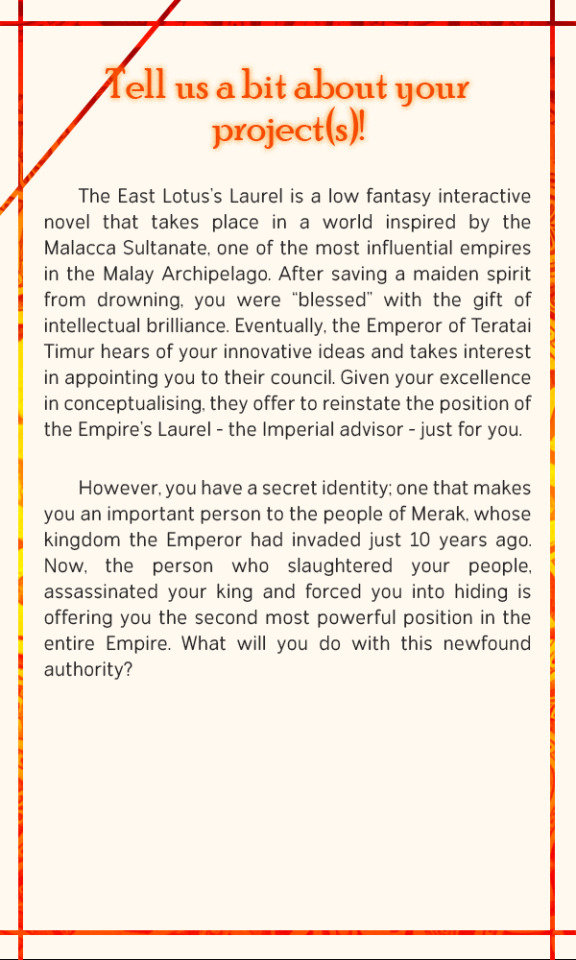






Stealing the spotlight for this interview... Aid!
Aid, author of The East Lotus’s Laurel
Religious Diversity Month Featured Author
10 years ago, the Empire took everything from you.
In the middle of the night, they razed your kingdom, assassinated your king, and seized the capital. You were forced to flee to a secluded village - if you didn’t, you’d have been next on their list.
Now, the Emperor stands before you, asking you to be the Laurel - the second most powerful position in the Empire, acting as the imperial advisor and overseer of state affairs.
The very same Emperor who ordered their army to kill everyone you knew, and destroyed everything you cared for.
What will you do with this newfound authority?
The East Lotus’s Laurel Demo TBA | Read more [here]
Tags: low fantasy, romance
(INTERVIEW TRANSCRIPT UNDER THE CUT!)
Q1: Tell us a little bit about your project(s)!
The East Lotus’s Laurel is a low fantasy interactive novel that takes place in a world inspired by the Malacca Sultanate, one of the most influential empires in the Malay Archipelago.
After saving a maiden spirit from drowning, you were “blessed” with the gift of intellectual brilliance. Eventually, the Emperor of Teratai Timur hears of your innovative ideas and takes interest in appointing you to their council. Given your excellence in conceptualising, they offer to reinstate the position of the Empire’s Laurel - the Imperial advisor - just for you.
However, you have a secret identity; one that makes you an important person to the people of Merak, whose kingdom the Emperor had invaded just 10 years ago. Now, the person who slaughtered your people, assassinated your king and forced you into hiding is offering you the second most powerful position in the entire Empire.
What will you do with this newfound authority?
Q2: Why did you settle for interactive fiction? What drew you to this format?
I’ve loved reading novels since I was a child, leading to a deep love for stories and other storytelling mediums. My relationship with interactive fiction began with dating sims (mostly by Pacthesis). Eventually, I discovered other games like Life is Strange and Detroit: Become Human, where the narrative flow is heavily influenced by the player’s choices.
I was especially blown away by the indie game Oxenfree. The story branching and emotional impact stemming from the ability to choose what to say or who to save/sacrifice really opened my eyes to the power of choice-based narratives.
Given that interactive fiction is a marriage between video games and novels, it was only natural for me to fall in love with this format, too.
Q3: How have your identity and beliefs influenced your work?
Being a Muslim gives me a unique insight towards the duality of religion. On one hand, I found my personal beliefs aligned with the core values of Islam - monotheism, altruism and pacifism are to name a few. On the other hand, I didn’t like how Islam as an organised religion is often used as a political tool or as a means of berating others who didn’t fit the mold of a ‘perfect’ Muslim.
Thus, I made a promise to myself to never make concepts, people or organisations in my work that are purely evil or purely good; I try my best to imitate the morally grey nature of reality. I like to remind myself that what is morally unjust to us is sometimes the last resort for others, and vice versa.
Q4: What aspects would you like to be more explored or represented in media involving your religion?
Definitely more representation of Muslim women. Preferably taking charge in their work, life or community and thriving despite the numerous hurdles that they’ll have to go through without dying at the end.
On a darker note, I wouldn’t mind seeing media that exposes the blind devotion of many Muslims towards Islam that isn’t terrorism/jihad. For example, many Muslim parents in my country send their children to a Tahfiz school, where they study Islam at a greater depth than in public schools. They believe that the school will instill Islamic values in their children, who are often ‘problem kids’, and then life will be buttery smooth once they graduate.
However, more and more Tahfiz schools are being exposed for abusing their students behind closed doors. I believe these kinds of issues rooted by blind devotion should be discussed more widely instead of being swept under the rug just because it gives the religion a bad look.
Q5: What are you most excited about sharing related to your project?
That would be the bits and pieces of Malay culture that I’ve taken as inspiration for my project. I don’t think many people know about Malaysia aside from the fact that one of our planes have been missing for 7 years, our ex-prime minister was one hell of a corrupt politician and we have a very attractive Olympic swimmer (see: Welson Sim).
But there’s so much more to this country that even its own residents are unaware of! I think that our rich culture and history deserves more attention and I’d love to play a part in sharing it with others :)
Q6: A tiny bit unrelated, but, what's your favorite religious holiday?
So, Muslims celebrate two official holidays. The first is Eid-ul-Fitr, when we celebrate after fasting for a whole month. The second is Eid-ul-Adha, which commemorates the obedience of one of our prophets who was willing to sacrifice his son for Allah. Don’t worry, his son was replaced with a lamb at the last minute as a sign of mercy.
My favourite of the two is Eid-ul-Adha. There’s less pressure to dress up nicely, it’s more low-key and most of the meat slaughtered is given to the poor and needy, highlighting the altruistic values of Islam. Also, it appeals to my introverted and mutton-loving side.
Q7: Any other thoughts or advice you'd like to give to fellow authors or readers?
Thank you so much to all the authors who’ve plucked up the courage to share their stories (I’m beginning to understand just how terrifying it is) with readers, and to all the readers who give their continuous support to the authors!
It’s really cool to be part of a community that has so many brilliant stories to share. I don’t know how long I’ll be here, but I do hope that it will be a long time. I look forward to seeing how much this community will grow as time goes by.
#if: events#religious diversity month#religiously diverse authors#religious diversity#interactive fiction#choose your own adventure#cyoa#choose your story
71 notes
·
View notes
Text
I've put together a list of YouTube channels that make video essays that discuss books, movies, TV, and other popular art mediums along with a suggestion for a video to watch from each channel. These are resources that I have found to help improve my own story building and critique skills and thought others would be interested. The list includes fifteen (15) YouTube channels to check out that will at least entertain, but hopefully give you fuel for thought and help improve your own writing. Feel free to add channels that I may have missed! Enjoy!
Continued below the cut in no particular order
The Storyteller
His video series, Operation Black Steel that he rebranded as Free Huey, talks about Black representation in media mostly through discussions about The Boondocks, but he also goes into details of other shows, video games, and music.
Operation Black Steel: Representing Black Women
The Closer Look
Henry talks about movies, TV shows, and video games and gets into the finer details of what makes them work or fail.
How to Write Great Dialogue
Lessons from the Screenplay
Michael goes into more technical details of movies by examining the screen play for whichever movie he is covering in that particular video.
The Soul of Good Character Design
Now You See It
Now You See It is a media analysis channel that searches for meaning in unexpected places.
Physical Injuries in Film: Never a Flesh Wound
Lindsay Ellis
Sometimes she'll make videos specifically about what makes a movie good or bad and then the next will be about more pop culture type stuff.
That Time Disney Remade Beauty and the Beast
Nerdwriter1
This channel breaks down movies, songs, art, and pop culture. Do you want insight into Frida Kahlo, Ghost in the Shell, or how Trump speaks? He has a video on all three.
Van Gogh's Ugliest Masterpiece
Rowan Ellis
She looks at movies, TV, and pop culture through a LGBTQ+ lens.
Disney and The AIDS Crisis
Every Frame a Painting
This channel was ran by two guys, Taylor and Tony. I say "was" because they no longer update the channel. One is an Editor while the other is a Director, they give their insights into the form of popular films.
Satoshi Kon - Editing Space & Time
Ryan Hollinger
He has older videos that cover a bigger variety of genres and media, but he has settled into a niche of horror specifically with his newer videos.
Remember Why THE MUMMY Is A Masterpiece
Hello Future Me
This channel actually covers topics in a way that is more geared towards to writing in general, making it very book/fan fiction friendly.
The Complex Problems with Mental Illness in Fiction
CineFix
This channel a lot of videos. The ones I would recommend are the Top 10 BLANK of all time, What's the difference?, and Brilliant Moments series of videos. They have other ones, but they tend to be more entertainment based than informative based.
Howl's Moving Castle - What's the Difference?
Folding Ideas
This is the YouTube channel where [Folding Ideas] talks about narrative theory: the mechanisms of storytelling. This encompasses the wider communications theories about the way that we process information, the techniques of how those messages are delivered, and the conglomerate application of all of the above.
Video Games as Art
Super Eyepatch Wolf
"I videos about things I like." That is all he has in for the description of his channel, but hell if he hasn't made some entertaining videos that gave me insight into some things I never had an interest in (wrestling) and introduced me to some other things I've really enjoyed (Junji Ito).
How Media Scares Us: The Work of Junji Ito
Filmento
Not my favorite channel because he can get carried away with the editing and effects in his videos, he still has good critiques of blockbuster movies and changes that could be made to improve them.
How To Build The Perfect Villain
Sneezy Reviews
I just learned about this channel yesterday. She doesn't have a lot of videos, but I like her take on Beauty and the Beast and decided to add it because of that.
Romantic Chemistry in the Remake of Beauty and the Beast
@shinidamachu tagging you like I promised!
54 notes
·
View notes